M76, The Little Dumbbell Nebula
Click image for full size version
January 2, 2017, Astronomy Magazine Online Picture of the Day January 13, 2017
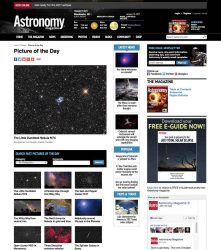 This is M76, also known as the Little Dumbbell nebula, and it is the faintest object in the Messier catalogue (but still visible in binoculars in a dark sky). It’s nickname is a nod to the bigger, brighter showpiece object, the Dumbbell Nebula (M27). Both of these planetary nebulae glow because gas thrown off by a dying central star is now absorbing the dying star’s energy and re-emitting it as visible light. Hydrogen accounts for the red; mostly oxygen for the blue-green. M76 is located in the constellation Perseus around 2,500 light years distant. Nebulae of this type dissipate over a period of thousands of years. The term “planetary nebula” has nothing to do with planets. Early telescope observers saw these objects as being disc-like, sort of like planets, and gave them this name.
This is M76, also known as the Little Dumbbell nebula, and it is the faintest object in the Messier catalogue (but still visible in binoculars in a dark sky). It’s nickname is a nod to the bigger, brighter showpiece object, the Dumbbell Nebula (M27). Both of these planetary nebulae glow because gas thrown off by a dying central star is now absorbing the dying star’s energy and re-emitting it as visible light. Hydrogen accounts for the red; mostly oxygen for the blue-green. M76 is located in the constellation Perseus around 2,500 light years distant. Nebulae of this type dissipate over a period of thousands of years. The term “planetary nebula” has nothing to do with planets. Early telescope observers saw these objects as being disc-like, sort of like planets, and gave them this name.
I could have cropped this image, but I decided to leave this little gem in a wide field full of stars. You can really get a sense of the vastness of space and the seemingly infinite number of stars out there. Start by considering the central star in the nebula, the dying star causing the nebula to be visible in the first place. Glowing at magnitude 16, it is around 10,000x fainter than a dark-adapted naked eye can see in a very dark sky. Stars at least 500 times fainter are scattered throughout this image, along with numerous faint and distant galaxies, each of them made of billions of stars. Some of the most prominent galaxies in this image are near the edges. I made an annotated image that shows the locations of a few of the galaxies, but there are others that aren’t marked.
I acquired this data in September, 2013, but was never happy with the result I was able to get then. Although this is better, there is a lot of detail in the centre of the nebula that I think I could bring out with some Ha and O3 data, so I will definitely come back to this target in the future.
Tekkies:
SBIG STL-11000M camera, Baader LRGB filters, 10″ f/6.8 ASA astrograph, Paramount MX. Guided with STL-11000’s internal guider. Acquistion, guiding and calibration with Maxim-DL. All other preprocessing and processing in PixInsight. Shot from my SkyShed in Guelph, Ontario. No moon. Average transparency and average seeing.
23x10mL, 12x10m R, 9x10m G and 9x10m B (Total = 8hr50m).
RGB Creation
Creation and cleanup: ImageIntegration was used to make R, G and B masters, which were cropped and processed separately with DBE. R, G and B were combined to make an RGB image which was processed with BackgroundNeutralization. ColorCalibration was then applied.
Linear Noise Reduction: MultiscaleLinearTransform was used to reduce noise in the RGB file. Layer settings for threshold and strength: Layer 1: 3.0, 0.6 Layer 2: 2.0, 0.45 Layer 3: 1.5, 0.33 Layer 4: 1.0, 0.2.
Stretching: HistogramTransformation was applied to make a pleasing, yet bright, image.
Synthetic Luminance:
Creation and cleanup of SynthL: The cleaned up R, G and B masters were combined using the ImageIntegration tool (average, additive with scaling, noise evaluation, iterative K-sigma / biweight midvariance, no pixel rejection).
Deconvolution: A star mask was made to use as a local deringing support. A copy of the image was stretched to use as a range mask. Deconvolution was applied (80 iterations, regularized Richardson-Lucy, external PSF made using DynamicPSF tool with about 20stars).
Linear Noise Reduction: MultiscaleLinearTransform was used to reduce noise in the background areas of the NB-RGB file. Layer settings for threshold and strength: Layer 1: 3.0, 0.6 Layer 2: 2.0, 0.45 Layer 3: 1.5, 0.33 Layer 4: 1.0, 0.2.
Stretching: HistogramTransformation was applied to make a pleasing, yet bright, image.
Noise Reduction and Re-Stretch: TGVDenoise was applied in Lab mode with 300 iterations with a range mask used to protect high signal areas. This was followed by a HistogramTransformation to raise the black point (but with no clipping).
Combining SynthL with RGB:
The processed SynthL was applied to the RGB image using LRGBCombine with luminance slider at default and chrominance slider at 0.43.
Additional Processing
Final Steps: MultisclaeLinearTransform was used to sharpen the nebula (bias of 0.05 in layers 2 and 3), followed by a mild convolution. Background and star brightness, contrast and saturation were adjusted in several iterations using Curves with masks as required.
Image scale is about 1.1 arcsec per pixel for this camera / telescope combination.

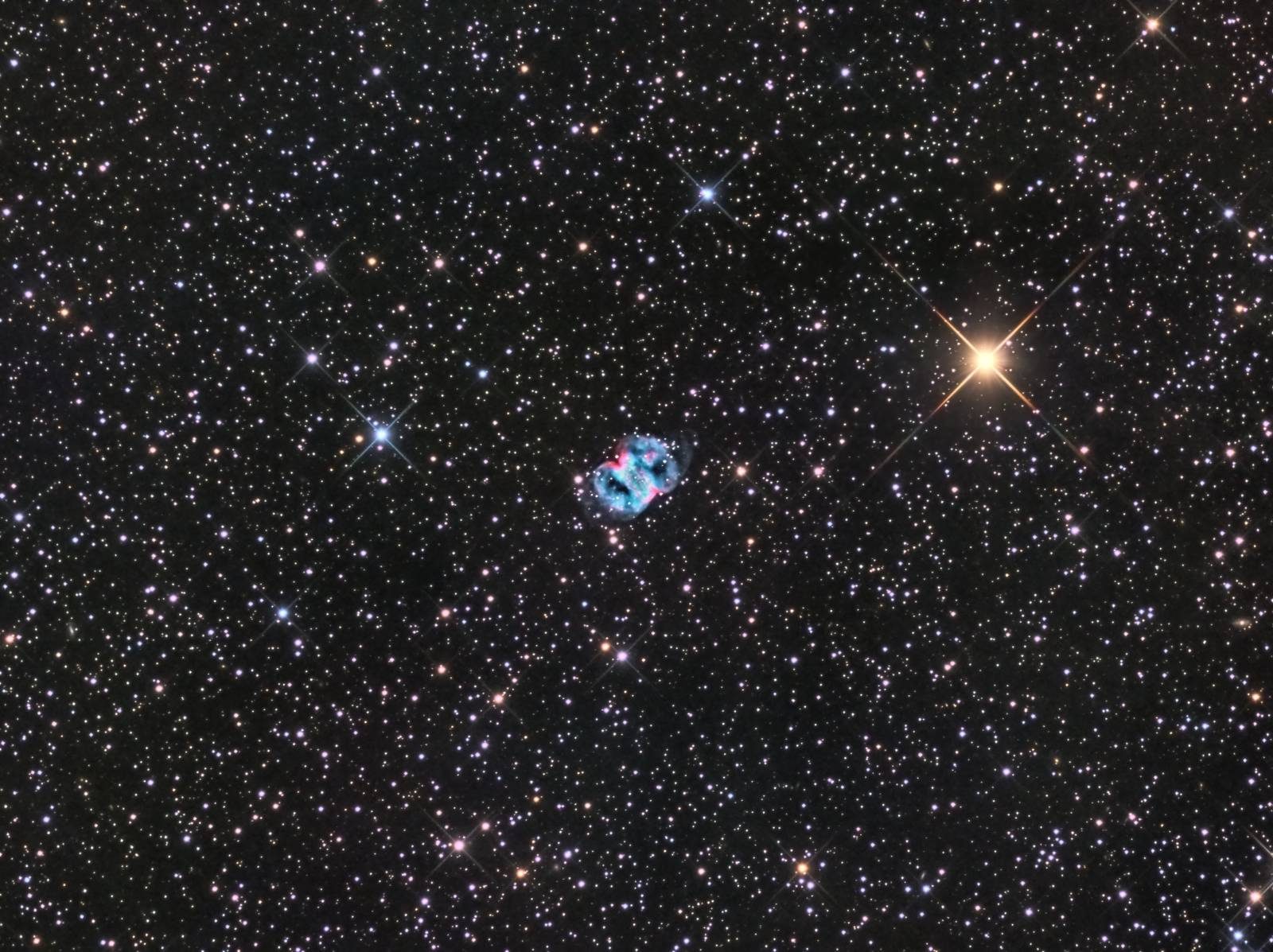

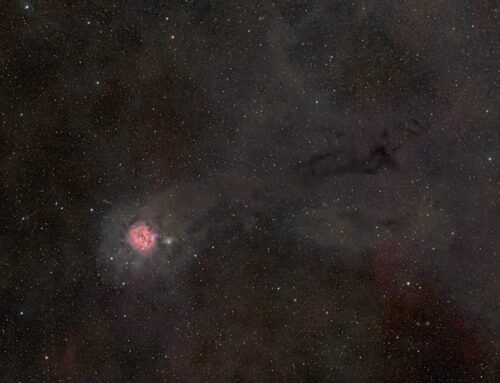
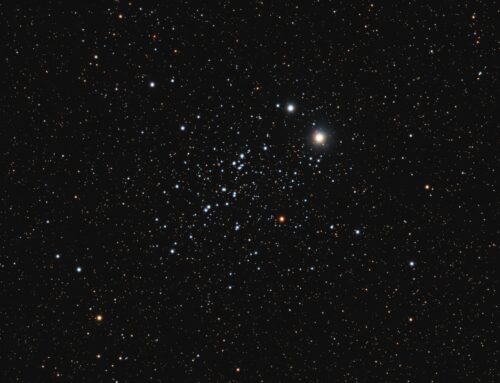
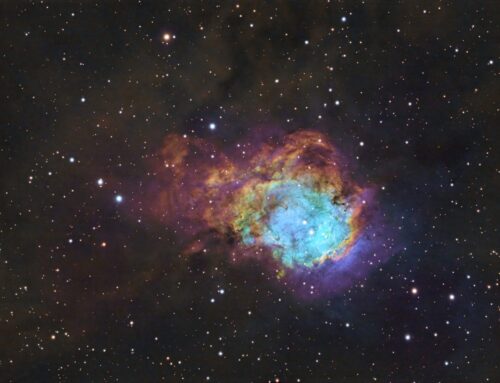
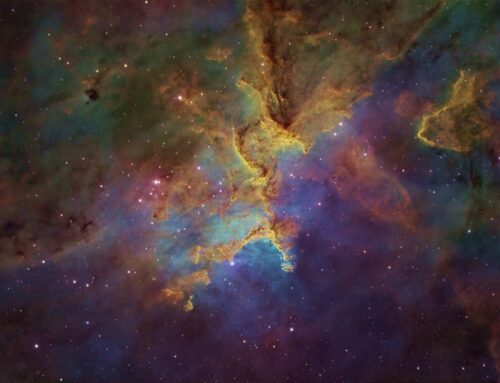
This really is excellent. Keep up the good work man.